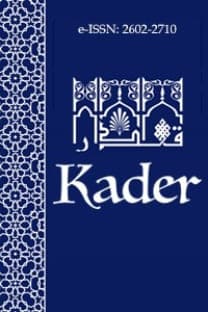Söz-Eylem Teorisi ve Hadislerin Anlaşılmasına Muhtemel Katkıları
As it?s well known Islamic culture essentially has a strong relationship with language. Therefore linguistic studies had received great attention from scholars from the beginning because of the fact that linguistic studies were the most important instrument for the understanding of the religious texts. Speech-act theory that is founded by the John L. Austin and is improved by his student J. R. Searle and many others is based on the adoption of that is to say something is to do something. Thus it?s stressed here that the utterances are not only locutions but in some case they are illucotions by which are intended to do something. In this way language looses its function as a mere conveying act/statemental to become a mutual tool that works by linguistic conventions. We believe that this respect implies great compatibility with religion and its function due to the fact that religion asserts itself not as a history/pure narration but as a power making changes on its adresse or adherents. Thus speech-act theory (sat) seems convenient for understanding of the religious texts because sat asserts that is to say something is to do something. By the way when we look at to our tradition we strike the track of this kind of approaches in our rhetoricians and usûlis. They studied these issues especially with regard to the distinction between constatives-performative and the classification of speech, along with the topics relating to the understanding of religious texts (âyât and hadith).
-
As it‟s well known Islamic culture essentially has a strong relationship with language. Therefore linguistic studies had received great attention from scholars from the beginning because of the fact that linguistic studies were the most important instrument for the understanding of the religious texts. Speech-act theory that is founded by the John L. Austin and is improved by his student J. R. Searle and many others is based on the adoption of that is to say something is to do something. Thus it‟s stressed here that the utterances are not only locutions but in some case they are illucotions by which are intended to do something. In this way language looses its function as a mere conveying act/statemental to become a mutual tool that works by linguistic conventions. We believe that this respect implies great compatibility with religion and its function due to the fact that religion asserts itself not as a history/pure narration but as a power making changes on its adresse or adherents. Thus speech-act theory (sat) seems convenient for understanding of the religious texts because sat asserts that is to say something is to do something. By the way when we look at to our tradition we strike the track of this kind of approaches in our rhetoricians and usûlis. They studied these issues especially with regard to the distinction between constatives-performative and the classification of speech, along with the topics relating to the understanding of religious texts (âyât and hadith)
